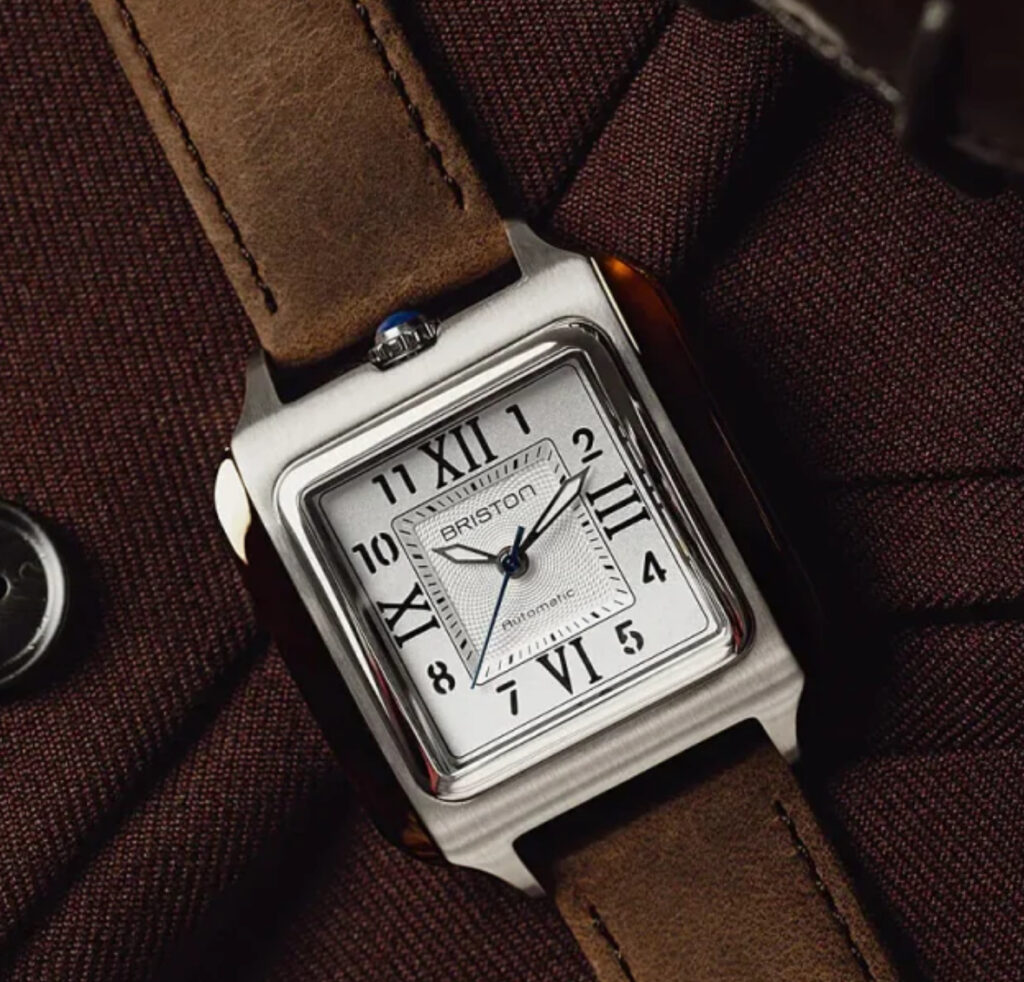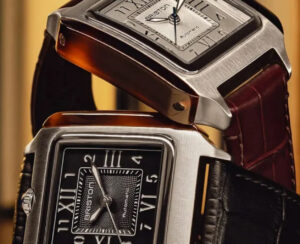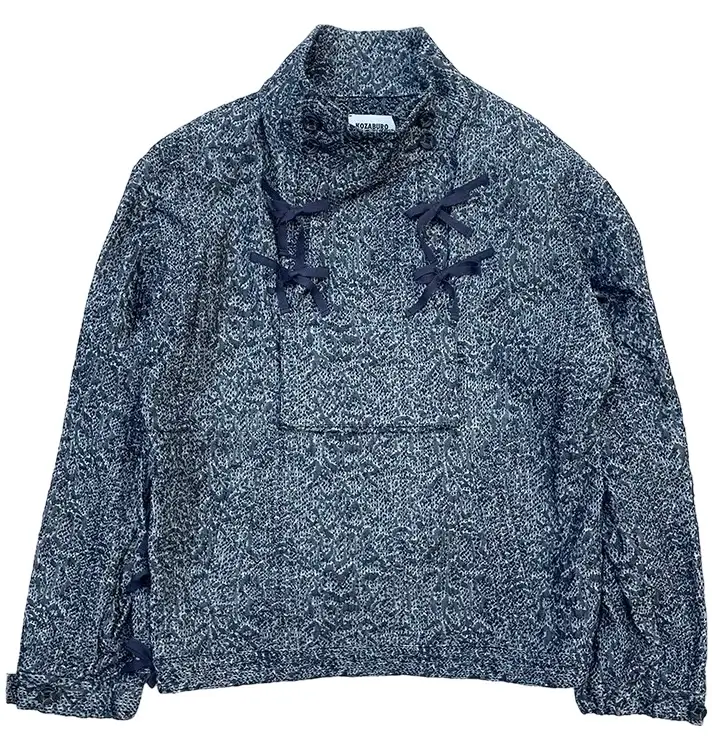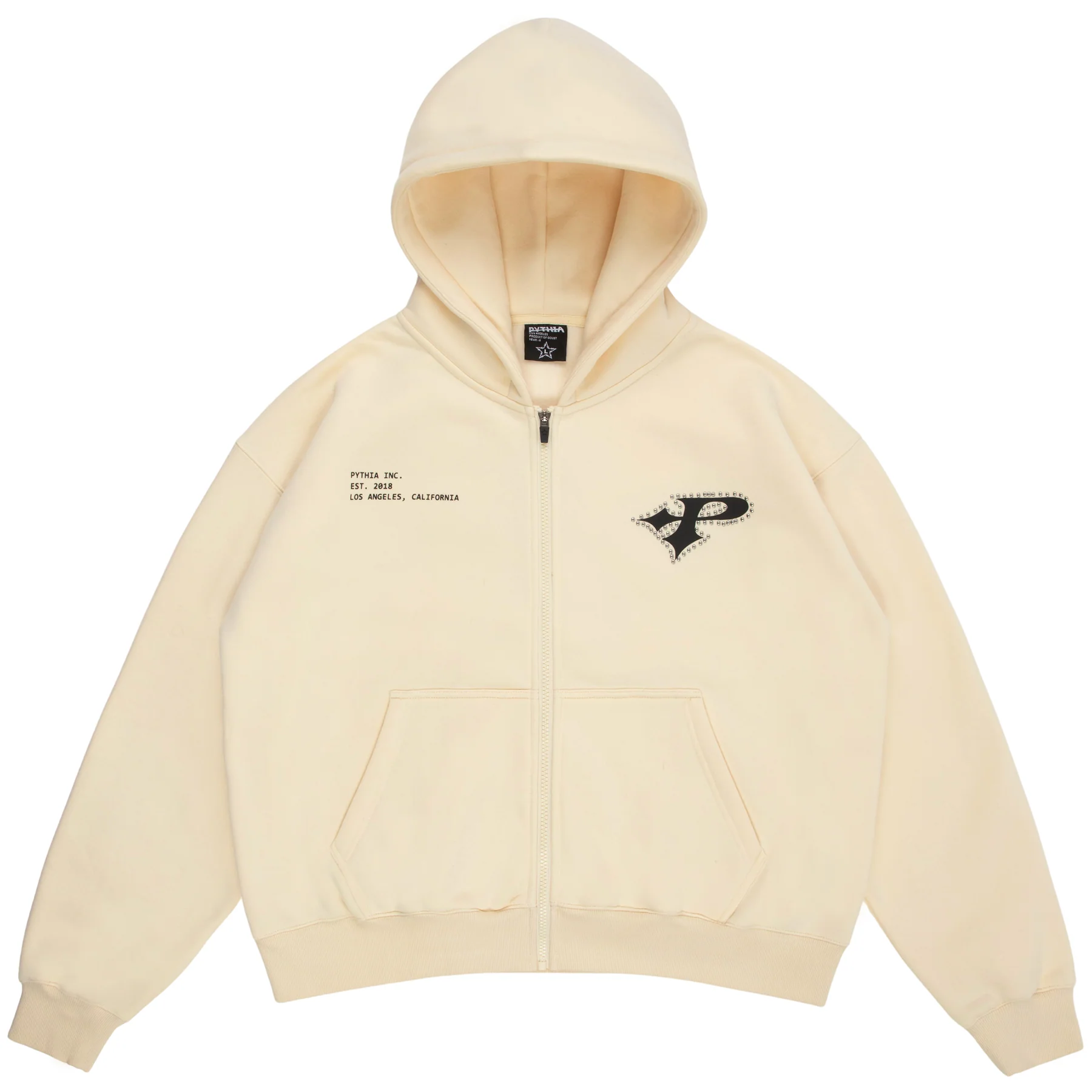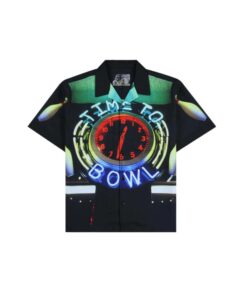In a landscape saturated with stainless steel, titanium, and ceramic, French watchmaker Briston dares to reframe elegance with an unexpected but artful pivot. Known primarily for its preppy-casual Clubmaster line, Briston has increasingly embraced a distinctive material that quietly subverts the codes of haute watchmaking: cellulose acetate. Often found in the frames of designer eyeglasses, this lightweight, hypoallergenic, and chameleonic substance is suddenly the protagonist in Briston’s most refined dress watch yet—an elegant timepiece that doesn’t shout for attention, but whispers in a tone unmistakably modern, intimate, and self-aware.
An Unlikely Bespoke: The Rise of Acetate in Fine Watchmaking
Acetate, specifically cellulose acetate, is an organic compound derived from cotton linters and wood pulp. First patented in the 1860s and used in everything from film reels to combs, it gained popularity in eyewear during the early 20th century thanks to its flexibility, vivid color possibilities, and tactile warmth. Where metals often feel cold or clinical against the skin, acetate adapts. It warms. It remembers touch.
Briston recognized this sensory potential early on. But rather than relegating acetate to novelty or surface ornamentation, the brand made it a central character in its design ethos. While luxury brands leaned into ultra-hard materials (sapphire, ceramic, carbon), Briston went soft—in feel, in aesthetics, and in emotional appeal. The result is a watch that doesn’t mimic the old guard of dress watches but rather rewrites their script.
The Case for Acetate: Comfort, Color, and Character
The defining feature of Briston’s dress watch is its acetate case, which sits between 38 and 42 millimeters, depending on the model. Visually, it’s a feast: tortoiseshell, amber, forest green, or smoky charcoal—all semi-translucent, glowing gently with ambient light. Each case has unique marbling, ensuring no two watches are exactly the same.
Physically, the watch is a pleasure to wear. The acetate’s lightness makes it disappear on the wrist in a way that heavier metals never quite manage. For those who wear watches daily—and especially for those who stack accessories or cuff shirts—it’s the kind of seamless comfort that accrues loyalty over time.
The color options also allow for something rare in the world of dress watches: personality. Where most formal timepieces are locked into monochrome formality, Briston’s acetate models invite whimsy without losing grace. One might pair the tortoiseshell case with a cream dial and a cognac leather strap, evoking the mood of 1930s Parisian cafés. Another might opt for deep green acetate and a canvas NATO band, channeling a subtle military heritage laced with art-school elegance.
The Clubmaster Reimagined: Iconic Shape, Modern Spirit
Briston’s flagship design—the Clubmaster—is where acetate finds its fullest expression. Inspired by mid-century watches and softened by a slightly squared cushion case, the Clubmaster format already speaks a hybrid language: part sport watch, part dress watch, all Parisian charm.
In its acetate iteration, the Clubmaster becomes something rarer still: a dress watch that doesn’t take itself too seriously. That doesn’t mean it lacks sophistication. On the contrary, the finishing is considered. Polished bezel edges. Sunray dials. Delicate applied indices. Dauphine or feuille hands in brushed steel. But these classical components are framed in a material more associated with spectacle frames than haute horology.
And therein lies the point: Briston is not trying to be Patek Philippe. It’s not here to dazzle you with centuries-old lineage or to place itself inside the boardrooms of Geneva. It’s here to challenge the unspoken codes of what dress watches must be. To prove that style, taste, and detail aren’t reserved for platinum or 18k gold cases.
French by Design: The Aesthetic DNA of Briston
France is known for many things—gastronomy, cinema, couture—but its watchmaking legacy is often overshadowed by its Swiss neighbor. Briston reclaims French elegance with a twist. It’s not about nostalgia for marine chronometers or Louis XIV pocket watches. It’s about contemporary French style: intellectual, relaxed, democratic.
You see it in the dial typography, clean and modern without veering into minimalism. You feel it in the color combinations, bold but not brash. And you experience it in the brand voice itself—Briston markets not just to collectors but to creatives. Architects. Writers. Cyclists. People who care more about texture and silhouette than about which maison made the movement.
This democratic approach extends to pricing. Most Briston acetate watches hover between $250 and $500, putting them within reach of younger consumers and new entrants into the world of mechanical timekeeping. This isn’t compromise—it’s invitation.
The Mechanical Heart: Quartz or Automatic, But Always Intentional
Many Briston dress watches use Miyota movements, reliable Japanese calibers known for their efficiency and durability. While quartz models offer precision and ease of use, the brand also produces automatic versions for those who prefer a mechanical heartbeat.
Purists may scoff, asking why a dress watch—especially one celebrating design and tactile experience—doesn’t feature a Swiss-made movement. But Briston is playing a different game. Its focus is on contextual beauty. On making a watch that doesn’t need to cost thousands to feel elegant. The acetate case, after all, is already doing the poetic work of making time visible, tangible, and sensorial.
Sustainability and the New Luxury Ethic
One of the less-discussed virtues of acetate is its organic origin. Derived from natural fibers, it stands in contrast to petroleum-based plastics or rare-mineral-intensive metals. Briston has increasingly embraced eco-conscious messaging, pointing to the recyclability and lower-carbon production of its acetate cases.
This aligns with a broader shift in luxury consumption: substance over status. The modern watch buyer—especially younger generations—is less concerned with Rolex prestige and more attuned to ethics, aesthetics, and emotional connection. A Briston acetate watch fits this mindset perfectly. It’s artisanal without being aloof. It’s unique without being inaccessible.
Rewriting the Dress Code
What does it mean to “dress up” today? The traditional rules—black suit, thin gold watch, minimal dial—have frayed. In their place, we see fluidity: linen suits with sneakers, silk shirts with chore jackets, watches that blend materials and moods.
Briston’s acetate dress watches thrive in this stylistic in-between. They complement both formality and playfulness. They pair just as well with a navy blazer as with an oversized sweater. They’re not “dressed down” dress watches—they are dressed differently.
And that’s precisely why they matter. In a time when gendered accessories, rigid fashion hierarchies, and status signaling are all being questioned, Briston offers a vision of elegance that is warm, expressive, and unpretentious.
Final Reflections: Time, Framed Differently
In elevating acetate from eyewear essential to horological centerpiece, Briston has done more than innovate—it has reframed the relationship between material and meaning. It reminds us that elegance doesn’t come from weight or price. It comes from proportion, intention, and the stories our objects tell.
This isn’t a watch for the collector who needs prestige. It’s for the person who sees beauty in the bend of light through amber. Who wants their watch to feel like a second skin. Who believes, quietly but insistently, that time deserves to be seen through a warmer lens.
No comments yet.

